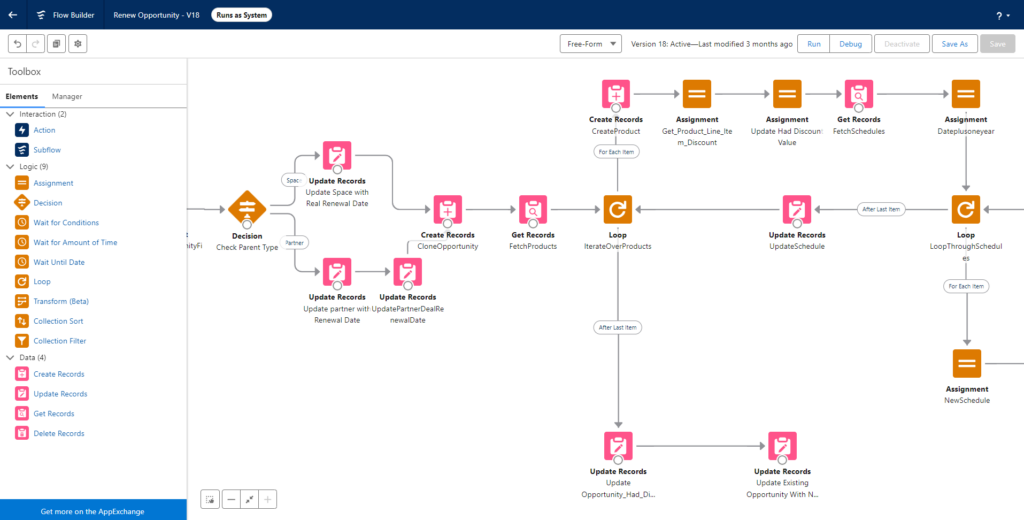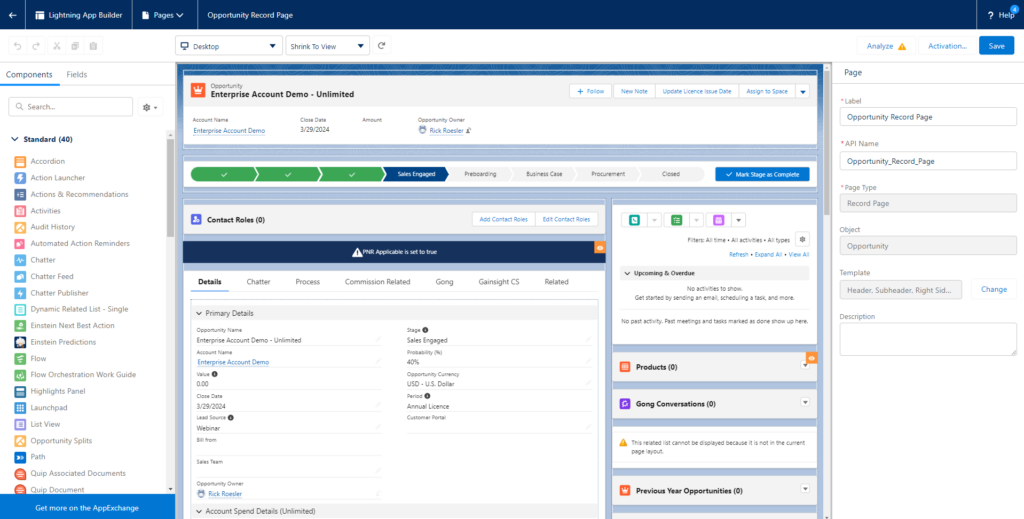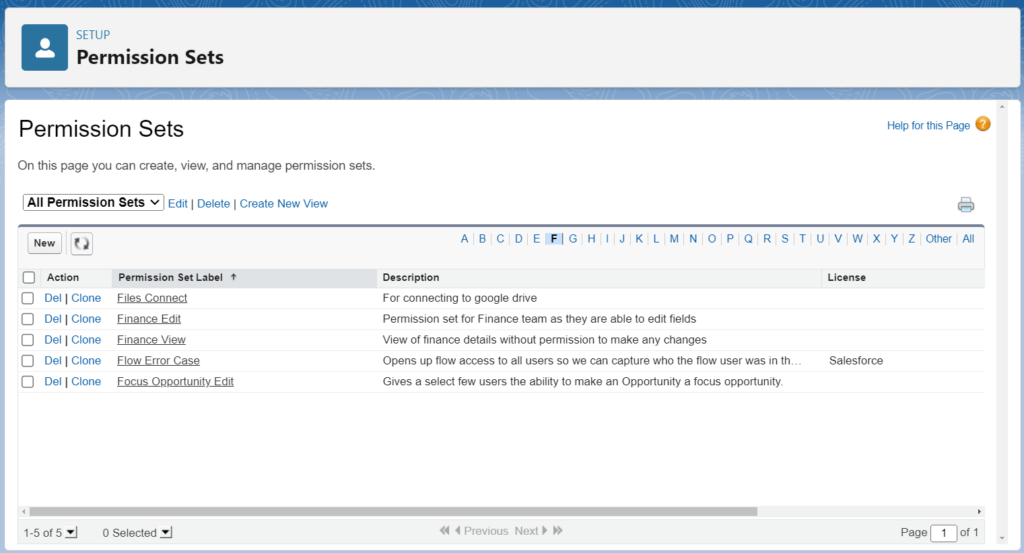

Understanding Salesforce Metadata: A guide for non-techies
Metadata is the key that drives the customization, functionality, and efficiency of your Salesforce org. Understanding the importance of Salesforce metadata is crucial to unlocking the full potential of the platform, ensuring that you maintain best practices and consistently deliver results that align with your organization’s goals.
What is Salesforce Metadata?
Metadata refers to “data about data”. In the context of software and data management, it serves as a detailed roadmap, capturing attributes, relationships, configurations, and other specifics. Think of it as the labels in a library’s card catalog: while not the content of the books themselves, these labels provide critical information about what each book is, where it resides, and how it relates to other volumes.
Similarly, in Salesforce, metadata encompasses the configurations, layouts, and settings that define how the platform behaves. It’s the blueprint that captures how objects relate, which fields are present on a layout, or the criteria for a specific automation. By grasping the importance of metadata, Salesforce Admins are better equipped to understand the platform’s architecture and make informed decisions during customization and management tasks.
Metadata can be linked to other metadata. This blog explores metadata dependencies.
Data vs Metadata
But how does metadata differ from data? While metadata describes the architecture and configurations of your Salesforce environment, standard data pertains to the actual records—the accounts, contacts, opportunities, and other entities you interact with daily. If metadata is the blueprint of a building, denoting rooms, corridors, and amenities, standard data is the people, furniture, and activities within those rooms.
Standard Metadata vs Custom Metadata
Salesforce ships with a complete set of base sales and service configurations. This foundational setup, the standard metadata, encompasses familiar elements such as standard metadata objects (e.g., Accounts, Contacts), fields (e.g., Account Name, Contact Email), apps, tabs, and more. These elements form the basis upon which organizations build and customize their Salesforce environments. They are universally recognized across Salesforce instances and provide a consistent starting point for all users.
In order to tailor Salesforce to meet specific business needs, Salesforce provides the ability to complement and extend the standard capabilities. This is where custom metadata types come into play. Whether it’s a custom object to capture a unique business process, a field to store data specific to your industry, or a Flow built to automate a distinctive task, these are all examples of custom metadata.

Benefits of Salesforce Metadata
Salesforce metadata serves as the foundation upon which organizations build and customize their unique Salesforce experience. These settings, components, and configurations deliver a wide range of benefits.
Let’s delve deeper into these benefits and the metadata types that enable them.
Types of Metadata in Salesforce
Business Process Customization
- Custom Objects and Fields: These are the lifeblood of any Salesforce instance. Custom Objects allow admins to tailor the platform, capturing data related to specific business needs, such as Projects, Events, or any unique entity. Each Custom Object comprises Custom Fields, which store the data related to these entities. Together, custom metadata types facilitate the creation of a robust data model that mirrors an organization’s operations and relationships.
- Flows: With the power to automate complex processes, Flows have become an indispensable tool for admins. Whether it’s guiding users through intricate procedures, automating routine tasks, or creating interrelated actions across objects, Flows offer a canvas for admins to choreograph detailed operations, streamlining user experiences and ensuring data consistency.
- Queues and Assignment Rules: Queues act as holding areas for unassigned records, ensuring they aren’t lost in the shuffle. Whether it’s an incoming lead or a support ticket, these records sit in a queue until an available agent or team picks them up. Alongside this, Assignment Rules work in the background to automatically route these records based on criteria like geography, product type, or any relevant determinant, optimizing response time and resource allocation.
- Validation Rules: Beyond just storing data, it’s imperative that the data is accurate and meaningful. Validation Rules act as gatekeepers, ensuring that the data users input meets specific standards or conditions. Whether it’s checking that a discount doesn’t exceed a set percentage or that an essential field isn’t left blank, these rules maintain data hygiene, preventing inconsistencies and errors.

User Experience Customization
- Page Layouts and Record Types: Page Layouts are the base of a customizable interface, ensuring users see only the most relevant fields and actions when they view or edit a record. Record Types provide further granularity, allowing different segments of users to experience varied layouts or processes. This combination ensures users operate in an environment that’s both efficient and relevant to their role.
- Dynamic Lightning Pages and Forms: Dynamic Lightning Pages and Dynamic Forms empower admins to craft modular layouts that change based on certain criteria, such as a field’s value, user profile, or device type. This delivers a tailored experience that aligns with the user’s role or the context of the data. For instance, a Sales Representative might see different sections on an Opportunity record, compared to a Sales Manager, based on the Opportunity’s stage.

Security and Access Control
- Profiles: The cornerstone of Salesforce security, Profiles act as a blueprint for user access. Each profile defines a set of permissions, detailing the objects a user can interact with and the overall tasks they can execute. With their comprehensive reach, Profiles ensure that users operate within defined boundaries, upholding security and data integrity.
- Permission Sets and Permission Set Groups: While Profiles lay the foundation, Permission Sets and Permission Set Groups allow for fine-tuning. Permission Sets grant additional privileges, without altering their base Profile. Permission Set Groups meanwhile, bundle various Permission Sets into one, simplifying assignment and management.

Sharing and Collaboration
- Roles: In large organizations, data visibility often varies by hierarchy. Roles, structured in a tree-like format, dictate the level of record access a user has, ensuring managers can view records owned by their subordinates while preserving data confidentiality.
- Groups: These collaborative constructs allow subsets of users to unite for a shared purpose. Whether it’s a cross-functional team collaborating on a project or a group formed for data sharing, these entities enable collective access and action.
- Sharing Rules: While Roles set the baseline for data access, Sharing Rules allow for exceptions. These rules can grant additional access levels to specific records for designated users or groups, ensuring flexibility without compromising security.
Reporting and Analytics
- Reports: In the realm of decision-making, data reigns supreme. Reports provide structured views of this data, helping stakeholders gauge performance, identify trends, and make informed choices.
- Dashboards: As visual compilations of reports, Dashboards offer snapshots of business health. Through varied components like charts, gauges, and tables, they provide a holistic view, aiding in quick analysis and strategic direction-setting.
- Einstein Analytics: Diving deeper than standard reports and dashboards, Einstein Analytics employs AI-driven insights to predict trends, uncover hidden patterns, and offer actionable recommendations, transforming raw data into a strategic asset.

Real-world Use Cases
Salesforce is a flexible platform, making it suitable for a wide variety of business models, each with its own unique processes and requirements. Through the power of Salesforce metadata, organizations can customize the platform to reflect their unique operational requirements, ensuring greater alignment between technology and business objectives. Let’s explore some illustrative use cases that spotlight this adaptability.
- E-commerce and Retail: Consider a fast-growing e-commerce brand that aims to optimize its customer service. Leveraging Salesforce automation, the brand can set up business-specific workflows. For instance, when a customer makes a purchase, an automatic thank-you email is dispatched. Or if a product return request is initiated, a predefined return process gets activated. Such automation doesn’t just streamline business processes but also enhances customer experience; the specific requirements for an effective e-commerce business model.
- Financial Services: For a bank or financial institution, data security and client communication are paramount. Salesforce can be aligned to these specialized requirements. Automation can be deployed to notify financial advisors of key client milestones- the maturity of an investment, for instance. Metadata-driven field-level security, can ensure that only authorized personnel have access to sensitive financial data, thus upholding the integrity of the institution’s processes.
- Healthcare: Patient care and data confidentiality are cornerstones in the healthcare sector. Salesforce can automate patient follow-ups, post appointments, ensuring continuity in care. Hospitals can set up portals where patients can securely access their medical records, integrating this process seamlessly within the broader patient care journey.
- Manufacturing: Manufacturers often grapple with complex supply chains and inventory management. By understanding and aligning with these unique business requirements, Salesforce can be configured to send automated notifications, when inventory levels dip below a certain threshold, or if a key supplier alters their delivery timelines.
The varied features and functionalities provided by Salesforce, underpinned by its metadata framework, make it an invaluable tool for businesses. However, its real strength lies in the alignment between the platform and the custom business processes. For Salesforce admins, understanding these requirements isn’t just a technical endeavor but a strategic one, ensuring that Salesforce is an integrated part of the broader business ecosystem.
Summary
Navigating Salesforce metadata might initially seem overwhelming. However, it’s evident that each metadata type has its distinct benefit. From customizing business processes with objects, fields, and dynamic forms to ensuring robust security protocols with profiles and permission sets, metadata is the backbone that allows Salesforce to be the flexible and powerful platform that it is.
Furthermore, understanding the core metadata types and their functionalities can transform how you harness Salesforce. Whether it’s to align the platform more closely with specific business models, or to bolster data integrity and security, metadata is pivotal.
And remember, like any tool or system, the more you interact with and understand Salesforce metadata, the less daunting it becomes. With time and experience, you’ll find yourself more adept at tailoring the Salesforce environment, to precisely fit your business’ needs.
More than just backend configurations, metadata is the paintbrush with which you can create your Salesforce masterpiece.
Sign up for
our newsletter
Subscribe to our newsletter to stay up-to-date with cutting-edge industry insights and timely product updates.

Rick Roesler
Senior Technical Product ManagerPublished: 20th October 2023






